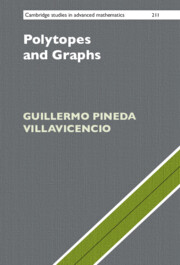5 - Reconstruction
Published online by Cambridge University Press: 14 March 2024
Summary
Reconstructing a $d$-polytope from its $k$-skeleton ($k\le d-2$) amounts to determining the face lattice of the polytope from the dimension and skeleton. For each $d\ge 4$, there are $d$-polytopes that have isomorphic $(d-3)$-skeleta and yet are not combinatorially isomorphic. But every $d$-polytope is reconstructible from its $(d-2)$-skeleton. Section 5.2 focusses on reconstructions from 2-skeletons and 1-skeletons. It presents an algorithm that reconstructs a $d$-polytope with at most $d-2$ nonsimple vertices from its dimension and 2-skeleton. This result is tight: there are pairs of nonisomorphic $d$-polytopes with $d-1$ nonsimple vertices and isomorphic $(d-3)$-skeleta for each $d\ge 4$.Blind and Mani-Levitska (1987), and later Kalai (1988), showed that a simple polytope can be reconstructed from its dimension and graph. We present a slight generalisation of this result and briefly discuss the theorem of Friedman (2009) stating that the reconstruction can be done in time polynomial in the number of vertices. The chapter ends with variations on the reconstruction problem.
Keywords
- Type
- Chapter
- Information
- Polytopes and Graphs , pp. 256 - 272Publisher: Cambridge University PressPrint publication year: 2024



